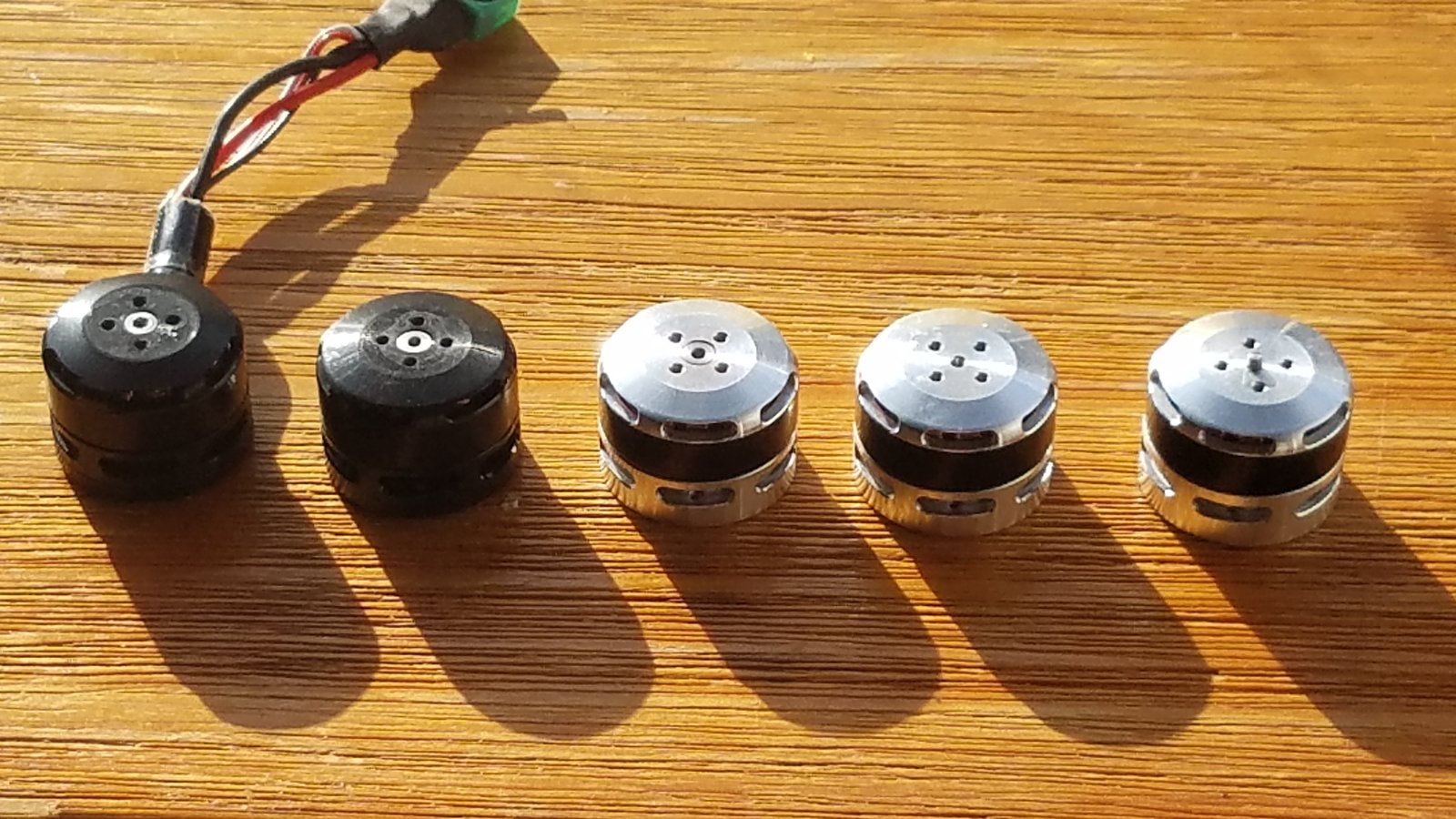Project update 10 of 21
Design Confirmation
We have exciting news! As of November 1st, we have confirmed the design for the production motors. Due to our yield rate issue as described in the previous update, Matt traveled to our motor manufacturer’s office in China to figure out how to make these motors more reliable.
A couple weeks before the visit, we sent 4 designs to the manufacturer with the goal of finding a design that is easy to manufacture and will not experience decalibration. The manufacturer made 8 samples of each design and they surprised us with a design of their own, so Matt had 40 motors to test on arrival.
Issue
The primary issue with our old design is described in great detail in the last update. Here’s a brief overview: We need the magnet that is embedded in the motor’s shaft to spin perfectly with the rotor. When the magnet moves relative to the rotor, the controller thinks the motor is at a different position, so it sends incorrect signals to the motor, which is extremely inefficient and causes the motor to overheat. We call this “decalibration.”
Motors of this size typically just have an aluminum rotor and a steel shaft. Prior to this new design, IQ modules had an aluminum rotor, steel shaft, and a magnet embedded in that shaft. So, if the shaft slips relative to the rotor, the magnet will go with it and the module will decalibrate; if the magnet slipped relative to the shaft, the module will also decalibrate. Basically, in our previous designs, there were two potential failure points and it was very difficult to know whether it was the magnet or shaft slippage (or both) that caused decalibration.
Testing in China
We developed a one minute procedure in October to test whether a module would decalibrate. This test shakes the motor to mimic the vibrations of a quad in flight. If the module passes this test, we can be sure the module will function well once it reaches the customer. Matt took this test with him to China, which allowed us to test the motors quickly. All of the motors that passed this initial test were flight tested as well, and none of those experienced decalibration.
Failed Designs
Of the 5 designs, 1 was very difficult to assemble, so we immediately took that off the table. Another design (the one most similar to our prior module designs) experienced decalibration in about 50% of the samples, so that was eliminated as well. The manufacturer’s design had a weak magnetic field, which would have caused other problems unrelated to decalibration.
New Design
Two designs worked well. Both successes use a design that is a bit unique for drone motors: the rotor and shaft are one aluminum part. This design eliminates the shaft slippage failure point, so now our manufacturer can focus on getting the best magnet-shaft fit possible. We selected the design that is least prone to manufacturing errors: aluminum shaft with a retaining ring and 3 mm magnet. In the picture below, the two motors on the right have this aluminum shaft design.
Before testing these motors on a quad, our primary concern with the aluminum shaft was its strength. Steel is certainly stronger than aluminum, so we reinforced the interior of the aluminum shaft with a smaller hardened steel shaft. Ideally, the aluminum will keep the motor light, while the steel reinforcement will keep the motor strong. Still, we needed to ensure the motors could withstand the forces they would experience on a quad. This meant hours of in-flight testing and pushing the motors to their limits. Fortunately, we were able to modify 6 other motors to match the 8 we already had of the selected design, so we had 14 motors to test. After hours of flying, the motors looked great. All 14 remained calibrated and there was no sign of wear and tear when we disassembled them post-flight.
Granted, we did not ram these motors into a tree at full speed, so it is possible that bad crashes could cause deformation more easily. However, we ran tensile tests at the HAX office when we returned to Shenzhen and the aluminum shaft design proved to be stronger under tension in the vertical direction compared to the press fit steel shaft. In other words, the aluminum shaft with a retaining ring is stronger than friction holding the press fit shaft in place. The old motors never failed as a result of these forces, so the fact that the new design is stronger relieves our initial concerns about material strength.
